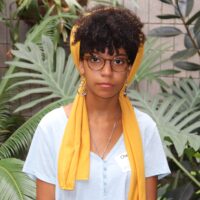
Voruscharin in cardiac glycosides
Cardiac glycosides (CGs) are a class of organic compounds that are used as medicines to slow the heart rate and strengthen the muscle. These organic compounds can be found in milkweed plants and make the plant very toxic to most animals and insects. However, monarch butterfly caterpillars are well adapted to most CGs, efficiently sequestering them as a defense mechanism against predators. One exception is Voruscharin, a thiazolidine-ring containing cardiac glycosides that are produced in trophic milkweed (Asclepias Curassavica) that strongly inhibits the butterfly’s sodium potassium ATPase. Requiring costly detoxification to be converted into a less toxic CG. It’s of interest to know its biosynthesis, especially how its thiazolidine ring was formed on the sugar residue. Recently, the Jander lab found that cysteine might serve as a donor of the thiazolidine group in voruscharin. As cysteine is actively involved in glutathione biosynthesis, I would like to see whether cysteine incorporation into voruscharin is influenced when glutathione biosynthesis pathway is inhibited by buthionine sulfoximine (BSO). BSO is a well known inhibitor of glutamate cysteine ligase (GCL), the enzyme that controls the glutathione biosynthesis. In this study buds and seedlings of trophic milkweed were collected and soaked in water solution or growth medium. The solutions were supplemented with isotope-labeled cysteine and tested with and without BSO. The comparison on isotope labeled voruscharin and glutathione in the treatments might also help determine whether GCL is the enzyme catalyzing the cysteine incorporation into voruscharin.
The PGRP program has taught me how much patience, precision and knowledge goes into lab work. I‘ve also learned that when mistakes happen with research, it’s how you deal with them that’s important. While working in the lab I made mistakes and was encouraged to try again and keep practicing. Working with my mentor, Fumin Wang, brought a new perspective on what goes into research and the significance each experiment has on the overall project. I am thankful that my experience has been eye opening to my passion in environmental work.
